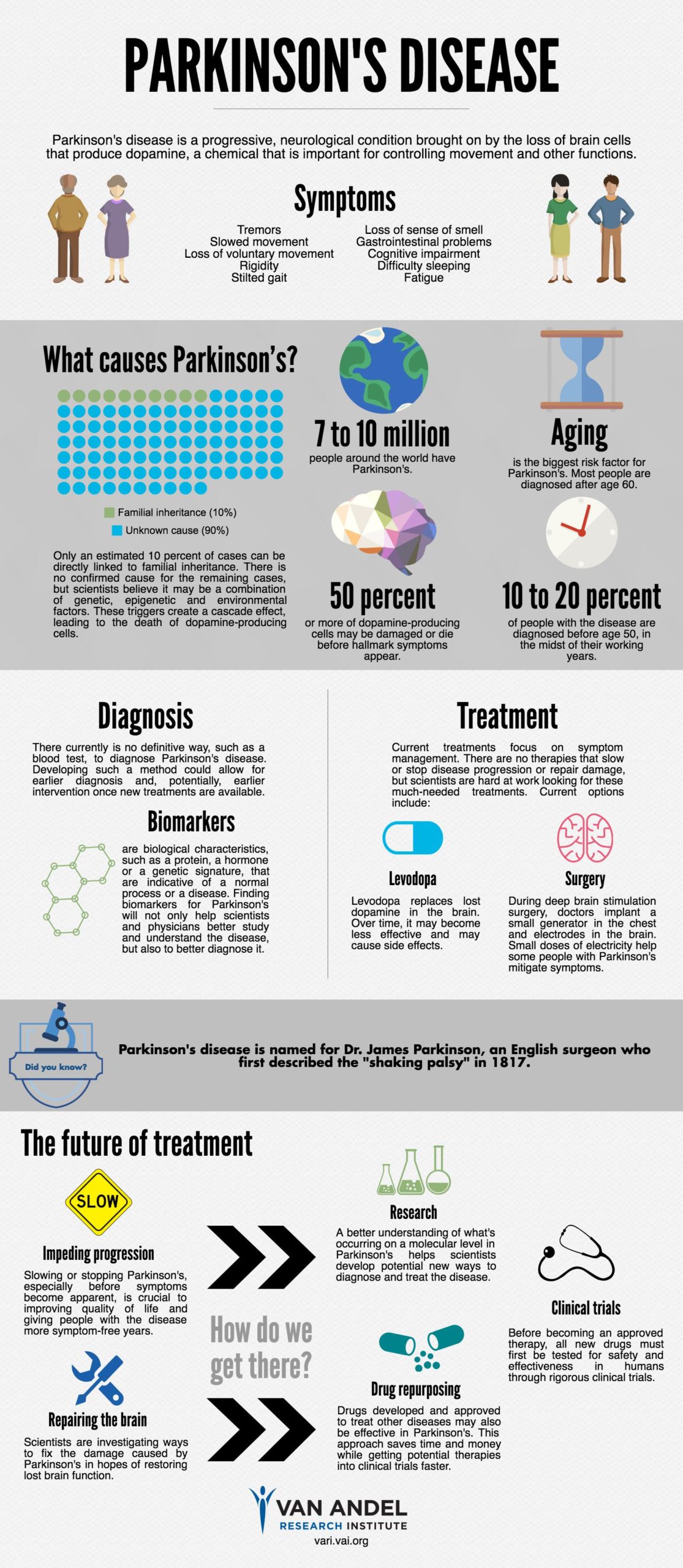New disease primer from Nature Journals offers updates on the cutting edge of Parkinson’s research and trends
Discovery and innovation are moving quickly in the fight against Parkinson’s disease, and keeping current can be a daunting task.
Fortunately, a new disease primer from some of the world’s leading Parkinson’s researchers offers a 21-page crash course on the latest in causes, diagnostics, treatments and related conditions.
The new overview of Parkinson’s disease, available from Nature Reviews Disease Primers, was coauthored by Patrik Brundin, M.D., Ph.D., associate director of research at VARI and director of the Center for Neurodegenerative Science.
“This is an exciting time in Parkinson’s research, and we have taken care to write this primer so that anyone interested in the disease—from neurologist to patient to caregiver—can find something new and useful,” says Dr. Brundin.
Highlights of the primer include a series of challenges being addressed in laboratories around the world:
- Environmental (pollution) and lifestyle (diet, exercise and smoking) risk factors
- The many different pathologies that ultimately result in the same symptoms
- Wide variation in symptoms, clinical course and neuro-pathology among people with Parkinson’s
- The possibility that several systems must malfunction before disease takes root
- Complex role of aging in disease onset
A complete list of topics covered in detail, many of which cover current research trends and forecasts for directions the field may take in the coming years:
- Disease overview—a brief history of Parkinson’s and description of disease hallmarks
- Epidemiology— Parkinson’s as the second-most common neurodegenerative disease affecting 2-to-3 percent of the population over age 65 (about 7 million people worldwide)
- Mechanisms/pathophysiology—what we know about how the disease starts and progresses
- Diagnosis, screening, and prevention—how we can detect it and intervene earlier
- Management—how we can care for people and families affected by Parkinson’s
- Quality of life—strategies for treating the whole patient within the context of lifestyle and individual needs
- Outlook—what’s on the cutting-edge of Parkinson’s research and what to expect
Also noteworthy is a summary of some of the latest and most promising emerging and experimental therapies:
- Gene therapy
- Cell transplantation
- Stem cell therapy
- Immunotherapy and vaccination against α-synuclein (a destructive protein found in Parkinson’s-affected brains)
- Small molecule therapies (drugs)
The full report is available here: http://www.nature.com/articles/nrdp201713.
